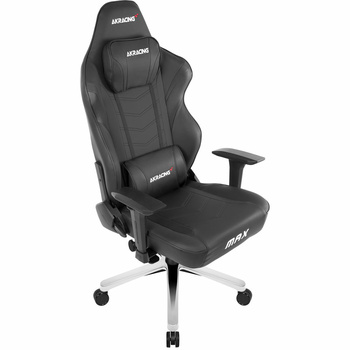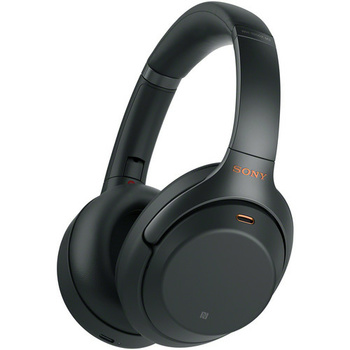[ad_1]
We spend a lot of time discussing camera gear and the like, but given the amount of time we spend at our computers for our work, it is also worth talking about ways to make our lives easier in our office, whether that is at home or in a dedicated studio. Here are six things that make my office life easier and more enjoyable.
Fast Internet (Particularly the Upload)
You have probably noticed that consumer broadband (DSL and cable) connections have much faster download speeds than upload. In the case of DSL, this is a choice, as the phone company can only allocate so much bandwidth in both directions and they know that most consumers consume more content than they push out, while in the case of cable, it is a design limitation. For me (and I suspect many other creatives), however, this has always been really frustrating. According to my router stats, I upload about 2-3 TB a year, a lot of that from backing up my photos and videos to the cloud.
Up until last year, I was stuck with a pretty standard cable internet package; the fastest I could get was a 100/10 Mbps connection, which equates to a maximum upload speed of 1.25 MBps. In other words, when I would come home from something like a graduation shoot with a couple thousand files, it would take over a day to back them up and would totally saturate the upload side of the connection for anyone or anything else trying to use it in the house.
Last year, I lucked out when our city’s first fiber company decided to make my building one of their test sites for residential fiber, and I now have a symmetrical 1,000/1,000 Mbps connection, boosting my upload speed to 125 MBps. Even my largest multi-thousands-image shoots only take about an hour to back up, and I never slow down the connection for anyone else in my house.
Of course, not everyone has the option of a fiber connection, but my point here is to shop your options and not just settle with whatever default connection your default cable company gives you.
A Good Office Chair

Given how much time a lot of us spend at our computers, it is really crucial both for your comfort and your long-term health to have a quality chair. A good office chair is often about $500-700, and while that is certainly not a cheap investment, they tend to last a decade or more and are well worth the improvement in your comfort and the benefits to your health. I actually ended up purchasing an ergonomic professional gaming chair; these are often just as good as an office chair, and they tend to go on sale more often, especially around Black Friday. In fact, I managed to get my chair on sale for $300, when it normally goes for around $500. It’s incredibly comfortable and really promotes proper posture.
UPS
A UPS (uninterrupted power supply) is essentially a large battery in tandem with a power strip and surge protector. In addition to giving you standard surge protection, it also protects your equipment in the event of a power failure, with the battery giving you enough time to shut down your devices safely or even continue working for a little bit. I personally use the APC Power-Saving Back-UPS Pro 1500. It gives me about 45 minutes of uptime if the power goes out, and it can even automatically and safely shut down my computer if the power goes out and I am not around to take control. Another great feature is its ability to smooth out variations in voltage to provide more consistent power to your electronics, which is good for their long-term stability.
Mini Fridge
I tend to work in long spurts where I am pretty deeply concentrated, and I also tend to drink a lot of Diet Coke. I have a tiny mini fridge on my desk that holds six cans and uses very little power, plus it is just massively convenient. If you work in a dedicated studio, it can be even more convenient to at least get a normal mini fridge, plus it can save you a lot of money if you bring your own meals, etc.
Proper Lighting
The first thing I did to my office was fix the lighting. It is a converted second bedroom with a pretty standard ceiling fan with three lights attached to it, which is fine for a bedroom, but pretty blah for an office. It also cast some pretty annoying shadows across my computer desk in the corner. First, I got rid of the very yellow bulbs. I replaced them with Hue White Ambiance bulbs. Full-color Hue bulbs are pretty cool, but they are not really necessary and are quite expensive (normally around $60 a bulb). Meanwhile, the Hue White Ambiance bulbs are about a third of the price and are also LEDs, meaning they use less power and last much longer than a normal incandescent bulb. They are fully dimmable and have a variable color temperature from a crisp white to very warm yellow, almost orange. Lastly, they are compatible with all major smart home assistants. Take time to add a lamp or two and proper bulbs; the change is ambiance and working conditions can make a big difference in your enjoyment using the space. Being able to dial in a cooler light makes a big difference for me.
Proper Headphones and Speakers

Most of us like to listen to music or audiobooks or watch movies while we edit and the like. A good set of speakers or headphones can be a really nice way to add to your comfort in your office. You do not need to go into audiophile territory; even just a $50 or $100 set of speakers can be a nice upgrade over your monitor’s built-in speakers. I personally use Sony WH1000XM3 noise-canceling headphones. They have fantastic sound quality and are very comfortable to wear, plus I can take them with me. The best feature, though, is the class-leading noise-canceling. They can make it almost uncomfortably silent, which really helps me concentrate.
How About You?
What makes your office life easier or more enjoyable? Tell me in the comments!
[ad_2]
Original Source Link